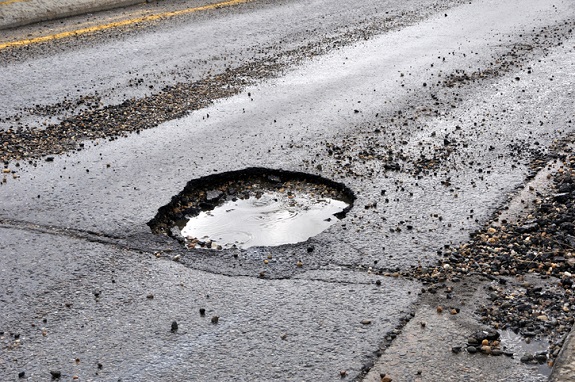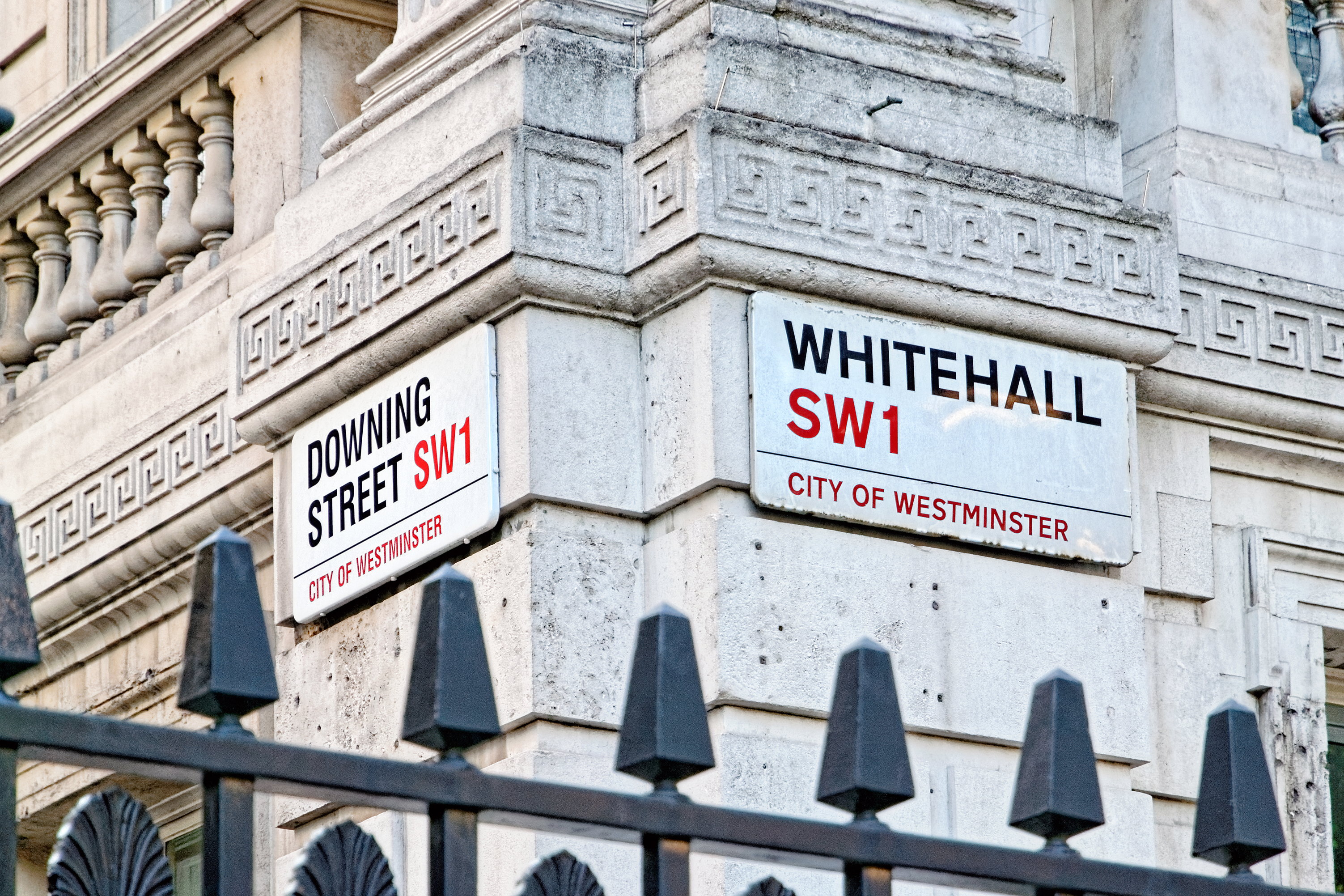A pothole emergency?
According to the AA, the state of the UK road network is fast becoming a national emergency.
Meanwhile, the RAC reported that between April and June of 2020 alone, some 1,766 drivers had suffered pothole-related accidents. Between January and March 2021, the RAC claimed that 4,694 of its call outs, a twentieth of the total, were related to pot-hole damaged vehicles. This figure was three times higher than the comparable figures in the first quarter of 2020, and attributed to particularly cold weather damaging roads in January 2021.
Commenting on the state of national road surfaces, the Local Government Association’s Transport spokesman, Cllr David Renard said: “Our local roads are deteriorating at a faster rate than can be repaired by councils.
According to the Institute of Advanced Motorist’s annual Roadsmart Safety Culture Report, the number of pot holes on the UK roads is now the fastest growing concern for motorists, above texting when driving, and drink driving.


Potholes are also developing as a political issue. During the 2021 Chesham and Amersham by-election won by the Liberal Democrats, it was reported that the party had cleverly placed a large number of its posters at spots next to the worst potholes in the constituency.

Figures by Go Compare, suggested that in 2020, it was taking Councils almost 3 weeks to repair the average pothole.
How are potholes formed?
Potholes are generally formed when water seeps into cracks in a road surface. Water softens the soil beneath the road surface, which is weakened further by traffic exerting pressure on the asphalt.
A combination of these forces then causes the asphalt surface to crack. Over time, the flow of traffic and adverse weather further erodes the asphalt and dislodges the soil from underneath. This process of deterioration is significantly faster when sub-zero temperatures create freeze-thaw action in the soil structure.
Potholes are most likely to form on roads which have insufficient drainage systems, insufficient asphalt thickness, or prevailing pavement defects.
The problems with potholes
Cyclists are by far the most vulnerable to severe accidents involving potholes. The pressure group, Cycling UK, has launched both local and national campaigns to improve the quality of road surfaces. According to Cycling UK, 15% of cyclists involved in an accident report the cause to be some form of road defect.
Motorists are also involved in pothole related accidents. Suddenly confronted with a pothole, drivers swerve off course, which in turn can often lead to a collision.
In addition to accidents, potholes lead to breakdowns and damage to motorist’s cars. Potholes can impact on a vehicle’s suspension, and alter its steering alignment. Most commonly they damage a tyre and require it to be replaced. As a car goes in and out of the pothole, the sidewall of the tyre is said to pinch together. This separation of the internal structure of the tyre, typically leads to a bulge .
Claiming pothole compensation
In theory it is possible for motorists to try and claim compensation from the relevant local authority in relation to the damage caused to their car by a pothole.
However pursuing such claims is generally regarded as a time consuming, and a far from guaranteed, process. Claimants will only be successful if it can be proven that the local authority already knew about the exact location of the pothole. A local highway authority can’t be held responsible for a pothole they didn’t know about
According to figures published by LeaseCar, between 2018 and 2019, Surrey County Council received the highest number of claims relating to pothole damage, amounting to 3,533. The Council paid out a total of £323,222 to people who had suffered damage to their car or personal injury as a result of potholes in Surrey. Other councils with big compensation payout levels were said to include Bury (£217,992), Northamptonshire (£214,804) and Cumbria (£181,687).
Local roads
Potholes are much more perilous on smaller country roads where hazards can take weeks to be reported and months to be repaired. It is often the case that a pothole on a local road has grown considerably by the time a local council is able to address it. This is largely attributed to a lack of centralised oversight and a lack of resources.
By contrast, motorways and major A-roads are administered by Highways England, which is governed by strict regulations to prevent surface induced accidents. Here the road surface undergoes regular inspections, and once a pothole has exceeded 150mm in diameter or 40mm in depth, there is a legal requirement to repair it within 24 hours. No such provisions are in place on smaller roads.
Pothole funding
It has been suggested that potholes are forming faster than they can be repaired. This is resulting in a backlog of unsafe road surfaces which continue to be used on a daily basis.
Both the motoring organisations, the AA and the RAC, have now called on the government to ring-fence a proportion of fuel duty and vehicle tax to be spent solely on surface repairs.
From the late 2010s, the UK Government committed to investing heavily in national road improvements.
As of 2020, the total funding for England’s roads included £500 million in a so called Pothole Fund, a £100 million Challenge Fund, and a further £50 million Pothole Action Fund allocation. This total of £650 million is intended to fix up to 50 million potholes, and reduce the number of future holes.
Industry groups have suggested that the money being made available is not adequate to solve the growing problem with the UK’s roads. The Asphalt Industry Alliance has suggested that the full cost of repairing the nearly 43,000 miles of UK roads that are in “poor structural condition” is around £11.14bn.
Quotes
“Many drivers are finding themselves having to use roads that in places better resemble the surface of the moon” – Nicholas Lyes, Head of roads policy, RAC.
“We probably haven’t spent enough on roads in this country since the 1980s”, Chris Grayling, Secretary of State for Transport, 2018
“We will launch the biggest ever pothole-filling programme as part of our National Infrastructure Strategy – and our major investment in roads will ensure new potholes are much less likely to appear in the future.” – The Conservative Party Manifesto, 2020
“Our potholed roads are in a perilous state. AA breakdown operations are rescuing record numbers of drivers whose tyres or wheels are damaged by potholes.” – Edmund King, AA President, 2018
“Together, SMEs and councils have started to ask why are pothole repairs filled with the same materials made to build roads, when they can fill potholes with materials made specifically for the job, that may prove to be significantly more efficient and cost-effective.” – Harry Pearl, CEO of Roadmender Asphalt, 2020
Statistics
A fifth of Brits have said they would pay an extra 10% in council tax to help local councils fix potholes. (Source – Roadmender Asphalt, 2020)
Drivers are now 1.5 times more likely to suffer a pothole breakdown than in 2006 when data first started being collected (Source – The RAC)
88% of drivers say that roads are in a worse condition now compared to 10 years ago. 67% say that roads have ‘considerably deteriorated’ over the last decade. (Source – The AA, 2018)
One in 10 drivers in the North East say their motorways are riddled with potholes (Source – The AA, 2018)










